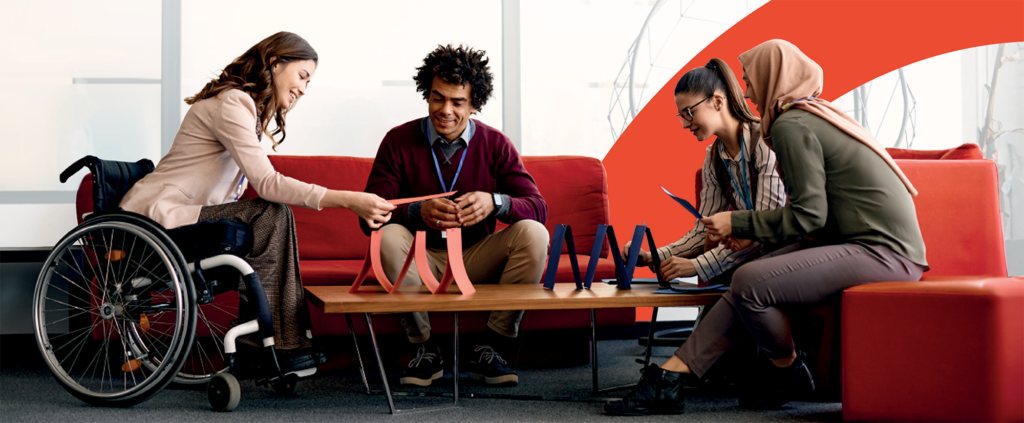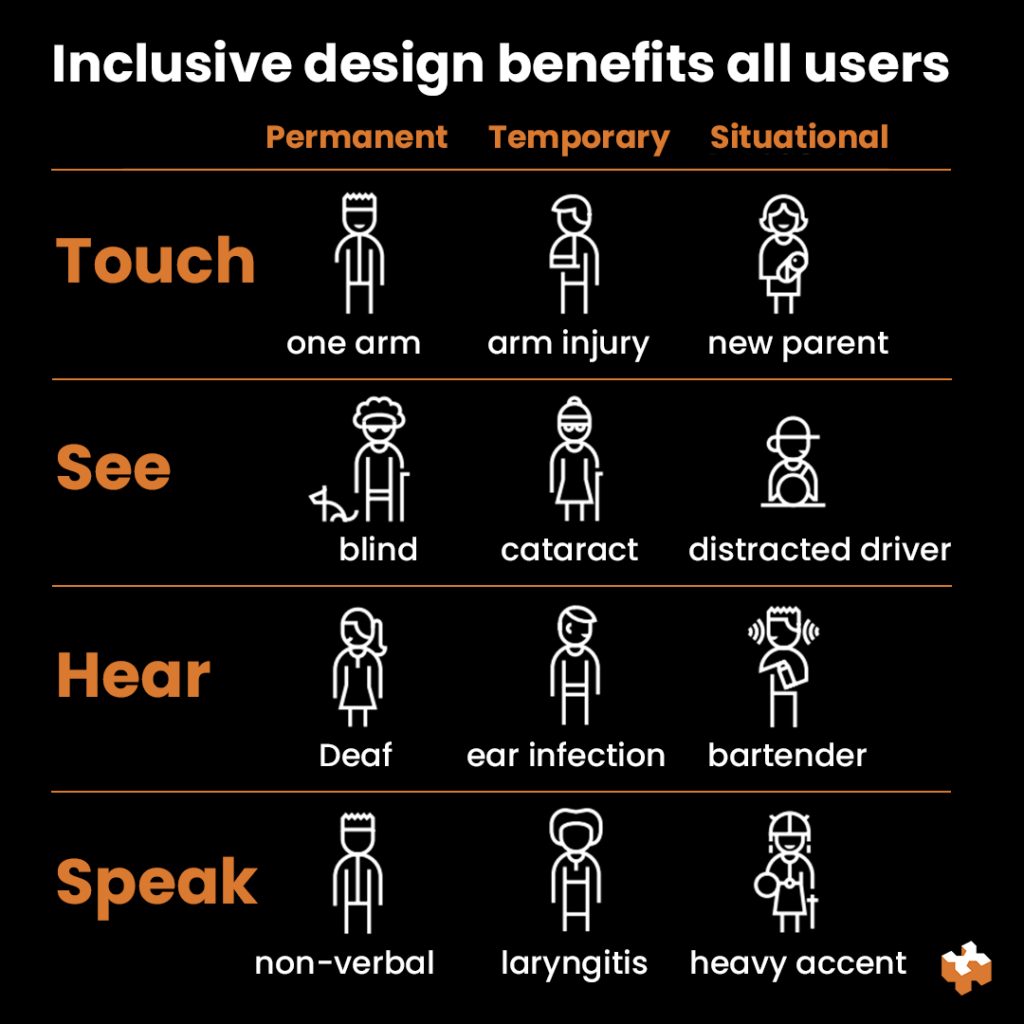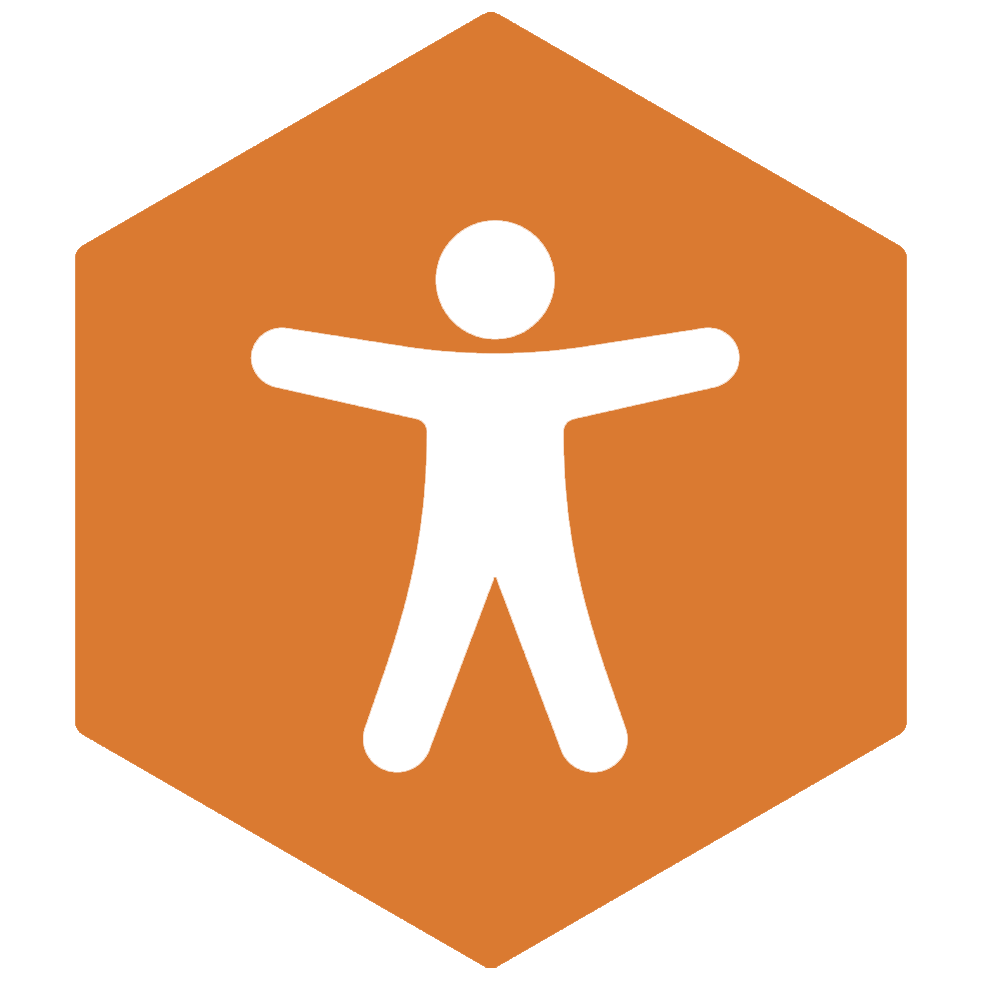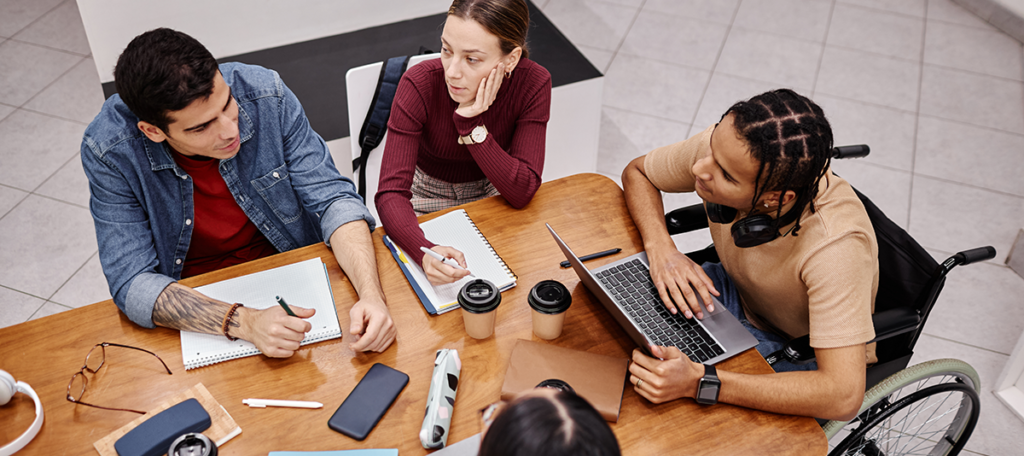Everyone can play an important part in helping to make an inclusive impact online. This blog explores ways we can all pull together to shape the digital world.
We live in a digital world, relying on platforms for online services, socialising, healthcare, education, recruitment and more. It’s hard to picture how we used to cope before the internet came into fruition. However, not everyone is lucky enough to have this indispensable resource at their fingertips. This is due to many websites being inaccessible, in fact, only 3% of the world’s websites are inclusive even in this modern day.
Who is impacted by poor digital accessibility?

One in six people has some form of disability, equating to an estimated 1.3 billion people worldwide. Everyone is unique and has their own requirements and preferences for how they access the web.
Some people may need:
- The use of assistive technology devices or software, such as a blind person using a screen reader, to be able to navigate a website.
- Content to be structured and written in a certain way or want it in a different format altogether to be able to digest information.
- Clear typography and inclusive colours to be able to view content.
- Media formats having things such as transcripts on podcasts to support Deaf users.
As we age, our eyesight may fade, or we may lose dexterity and struggle to use a mouse. Alternatively, we could suffer from an injury, leaving us needing additional support when online. You may even be in busy surroundings and need captions on a video to understand its content. So, without these considerations being actioned, it results in a wide demographic of users either having a poor and frustrating digital experience or, worse, being completely shut out of a vast array of platforms and the services that they offer.

Ultimately, digital accessibility makes a website, app, social media platform, or document more usable and user-friendly for every single person.
(Photo credit: Microsoft Inclusive Design Toolkit)
How you can make an impact with digital accessibility

At this stage, you might think, ” Well, I’m not a web developer; there’s nothing I can do to solve this problem.” Of course, web developers do play a vital role in building or retrofitting websites to be accessible. However, each and every one of us has an important part to play in creating a truly accessible digital sphere that’s free from barriers for everyone.
Let’s delve into a few ways that society can help to achieve this:
- Leadership teams in organisations can pave the way to becoming inclusive by raising awareness on the need for accessibility and creating actionable strategies.
- Web developers can learn how to perform audit testing to seek out errors and perform routine accessibility checks.
- Teachers can ensure they are providing inclusive learning resources for students.
- Recruitment teams can make sure that interviews and careers information empower people with disabilities to have the same opportunities.
- Marketers, communication teams, or anyone who updates online content can learn how to write and structure content in a user-friendly way.
- Designers can explore best practices for typography and inclusive colour variations.
- People in e-commerce should check if everyone can easily complete a purchase on their platform and if any adverts or automatically playing features may cause harm to shoppers.
- Office staff can adapt their documents and policies to ensure internal staff or external customers get the support they require.
- Multimedia creators, whether it be videos, animations, or podcasts, think about how to do so inclusively and safely.
- If you’re a social media influencer, or post content in general, make sure to always add alt text with imagery, use captions with videos, transcripts with podcasts, #PascalCase hashtags and emojis in the correct way.
This could even be if you work in a supermarket and only have touchscreen payment facilities, have you considered how someone who is blind or has low vision could access this? It’s all about putting yourself in someone else’s shoes and thinking of the best solutions to support everyone. If you don’t fit into any of the criteria above, then you can still be an accessibility advocate and help in raising awareness about these issues.
You get the drift; there are numerous ways that we can all get involved and make a real difference.
The first step to take on your inclusive journey

Aside from checking if your website or app is accessible, which you can do with us for free, the best starting point is to reach out and ask the people who are accessing your online content how you are doing. Something as simple as that can be a turning point for you to make a real impact. Don’t be afraid to ask, people want to help you to understand where you might be failing to be inclusive, because ultimately, it helps them too in the long run.
Your impact matters. Start by making small changes today, which will make a big difference to millions of people.
Need help in becoming accessible?
Our accessibility experts are on hand to help you on your way to becoming inclusive in the online world. Whether through accessibility training, website audit testing, web development, or consultancy, we want the same outcome as you; an accessible digital future.
